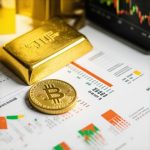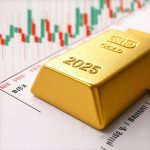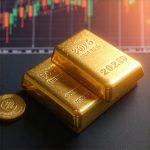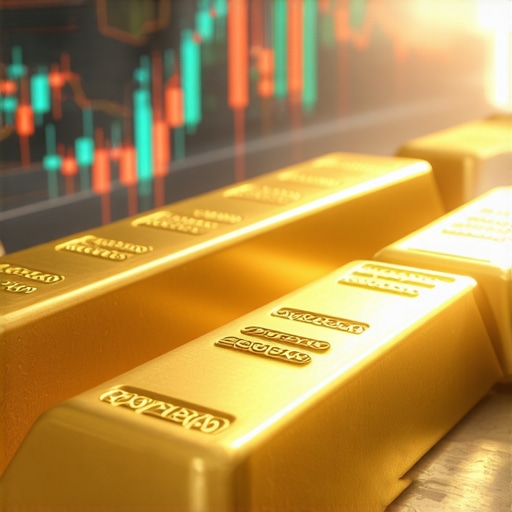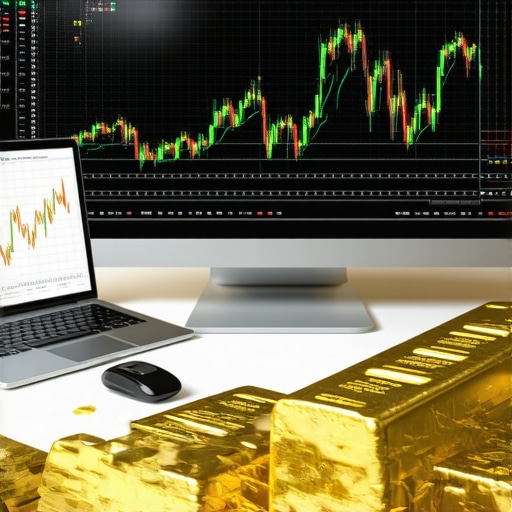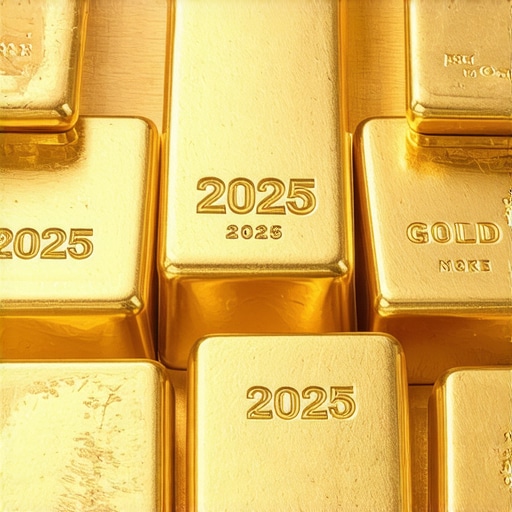Understanding the Impact of Central Bank Gold Purchases on 2025 Price Trends
As global monetary authorities recalibrate their reserves amidst geopolitical uncertainties and inflationary pressures, the role of central bank gold acquisitions has taken center stage in forecasting the 2025 gold market trajectory. Expert analysis suggests that these sovereign movements could significantly influence gold prices, challenging traditional supply-demand paradigms and introducing new volatility patterns.
Deciphering the Mechanisms: How Central Banks Influence Gold Demand
Central banks, historically seen as stabilizers, now emerge as active players in gold accumulation, driven by a quest for diversification and economic sovereignty. When these institutions increase their gold holdings, it signals a shift in monetary policy and risk perception, which can catalyze bullish sentiment among investors. The dynamics of such purchases are complex, involving strategic reserves management, currency hedge considerations, and geopolitical signaling, all of which intertwine to impact the spot and futures prices.
Expert Insights: Quantitative Models Project Price Fluctuations in 2025
Utilizing advanced econometric models and historical data, analysts project that sustained central bank buying could push gold prices upward, potentially breaching key resistance levels. However, these projections also account for correlated factors such as inflation rates, US dollar strength, and geopolitical events. For instance, a notable increase in official gold reserves by emerging economies could serve as a catalyst for a sustained rally, as detailed in recent market trend reports.
What Are the Risks? Navigating Market Volatility and Policy Shifts
Despite optimistic forecasts, experts caution that unpredictable policy shifts, technological disruptions, or shifts in investor sentiment could introduce volatility. The 2025 landscape is also shaped by the evolving role of gold in the digital economy, with increasing interest in gold-backed cryptocurrencies and blockchain-based trading platforms adding layers of complexity to demand dynamics.
How Will Gold Futures Trading Adapt to Increasing Central Bank Purchases?
Futures markets are likely to see heightened activity and strategic positioning as traders anticipate shifts in physical demand and policy signals. Sophisticated technical analysis and risk management techniques will become essential for navigating this environment, emphasizing the importance of expert guidance and continuous market monitoring.
For investors seeking to deepen their understanding, exploring gold stocks and mining shares can provide additional avenues for diversification, aligning with the broader expectations for a bullish 2025 scenario.
Interested readers are encouraged to contribute insights or explore related best practices for buying physical gold to enhance their investment strategies.
Unveiling the Hidden Forces: How Gold Demand Fluctuations Will Drive 2025 Prices
While central bank activities often dominate gold price narratives, the nuanced shifts in consumer and industrial demand play an equally critical role in shaping the market. As emerging economies accelerate their gold consumption, driven by expanding middle classes and increasing jewelry investments, the supply chain faces new pressures. Analyzing these demand trends reveals that smart investors should pay close attention to evolving consumer preferences, technological innovations, and geopolitical influences that intertwine to influence the 2025 gold landscape.
What Are the Emerging Trends in Gold Demand That Could Disrupt 2025 Price Forecasts?
Recent reports indicate a significant surge in gold demand from Asia, particularly in China and India, where cultural affinity and economic growth continue to fuel jewelry and investment purchases. Furthermore, the rise in gold-backed exchange-traded funds (ETFs) and digital gold platforms reflects a shift towards more accessible and liquid forms of gold investment, potentially amplifying demand in ways not fully captured by traditional supply metrics. Analysts suggest monitoring these demand channels closely, as they could redefine the supply-demand equilibrium and lead to sharp price movements, especially if supply bottlenecks emerge. For a comprehensive understanding, see best gold demand trends to watch in 2025.
How Will Supply-Side Constraints Influence the 2025 Market?
On the supply front, gold mining operations face mounting challenges, including environmental regulations, geopolitical tensions, and rising production costs. These factors contribute to a tightening of available physical gold, which, coupled with increasing demand, could create a supply crunch. Notably, major gold-producing regions such as South Africa and Australia are experiencing declining yields, which could further limit supply growth. Experts emphasize that understanding these supply constraints is vital for anticipating price trajectories and making informed investment decisions.
Furthermore, the growing interest in recycled gold adds another layer of complexity. While recycling can alleviate some supply pressures, it also introduces variability in quality and availability, making it harder to project long-term supply stability. This interplay of demand growth and supply limitations underscores the importance of strategic asset allocation, including investments in gold mining stocks and ETFs.
Expert Insight: How Can Investors Leverage Supply-Demand Dynamics for Optimal Gains?
Investors with a nuanced understanding of these complex dynamics can employ a variety of strategies, from tactical allocation in physical gold and ETFs to more sophisticated options like futures and options trading. The key is to stay ahead of emerging trends and leverage market signals—such as shifts in demand patterns and supply disruptions—to time entries and exits effectively. A balanced approach that considers both macroeconomic factors and industry-specific developments can significantly enhance portfolio resilience and growth potential, as detailed in ultimate guide to investing in gold stocks and mining shares in 2025.
The Strategic Role of Gold in Central Bank Reserves: Beyond Diversification
Central banks are increasingly leveraging gold as a strategic reserve asset, not merely for diversification but as a safeguard against systemic financial risks. This shift is underscored by the inclusion of gold in the IMF’s Special Drawing Rights (SDR) basket, reinforcing its status as a resilient store of value in times of economic uncertainty. According to the World Gold Council’s 2024 report, central banks added approximately 650 tonnes of gold to their reserves in 2023 alone, signaling a robust trend that could propel prices upward through 2025.
How Do Central Bank Gold Accumulations Reflect Geopolitical Strategies?
Gold acquisitions by sovereign entities often serve as geopolitical signals, indicating a move towards economic sovereignty or a response to sanctions. For instance, the increased gold reserves by China and Russia are seen as efforts to reduce dependency on US dollar-denominated assets, thereby influencing global reserve currency dynamics. This behavior not only bolsters the countries’ financial resilience but also impacts global gold demand, contributing to price volatility. Experts like Dr. Mark O’Byrne from GoldCore emphasize that understanding these geopolitical undercurrents is crucial for accurate market forecasting.
Technological Disruptions and the Digital Gold Economy: New Frontiers
The advent of blockchain technology and digital gold platforms is revolutionizing demand channels. Platforms like Tether Gold and digital asset-backed tokens allow investors to hold gold with unprecedented liquidity and ease of transfer, blurring the lines between physical and digital assets. As of 2024, digital gold holdings have surged by over 30% year-over-year, adding a new layer of demand that traditional metrics may overlook. This evolution calls for sophisticated analytical models that incorporate digital demand metrics alongside physical supply considerations.

What Are the Implications of Digital Gold for Price Volatility?
Digital gold’s liquidity and accessibility could amplify short-term price swings, especially if regulatory environments tighten or technological disruptions occur. Investors must consider the potential for rapid inflows and outflows driven by sentiment shifts in the digital asset sphere, which could decouple prices from physical gold fundamentals. As noted in a recent report by CoinDesk, the integration of digital gold with mainstream financial markets may lead to a new paradigm of price formation—one that demands continuous, high-frequency market analysis and adaptive risk strategies.
Supply Chain Innovations and Recycling Technologies: Shaping Long-term Availability
Emerging innovations in gold recycling, such as chemical and biological extraction methods, are poised to alter supply dynamics significantly. These technologies promise to enhance the efficiency and environmental sustainability of gold recovery, potentially increasing recycled gold’s share in the market. However, the variability in purity and quantity remains a challenge, requiring investors to closely monitor technological advancements and regulatory developments that could influence supply stability.
Moreover, the exploration of deep-sea and asteroid mining presents a long-term horizon solution to supply constraints. Although still in experimental stages, these frontier technologies could eventually unlock vast new sources of gold, challenging traditional supply-demand models.
How Should Investors Incorporate Supply Innovations into Their Strategy?
Investors should consider diversified exposure across physical gold, recycling equities, and innovative mining ventures. Staying informed through industry reports such as those published by the Gold Institute and technological feasibility studies will be vital. A nuanced approach that balances immediate demand trends with long-term supply innovations can optimize portfolio resilience against market shocks and structural shifts.
Unveiling the Strategic Interplay of Central Bank Reserves and Market Sentiment in 2025
As the geopolitical landscape becomes increasingly complex, central banks are not only diversifying their reserves but actively shaping the gold market through strategic acquisitions. This behavior reflects a broader shift toward gold as a safeguard against systemic risks, especially amidst fluctuating fiat currencies and global economic uncertainties. The 2025 outlook suggests that these sovereign reserve policies could serve as catalysts for sustained bullish trends, emphasizing the importance of understanding geopolitical motives behind reserve adjustments. It is essential to analyze how these reserve shifts influence investor confidence, market liquidity, and the overall supply-demand equilibrium, especially considering the increased role of gold in the digital economy.
How Do Geopolitical Strategies of Major Economies Influence Gold Reserve Accumulation?
Major economies like China and Russia are leveraging gold reserves as tools of geopolitical strategy, often as counterweights to dollar dominance. Their accumulation of gold reserves during periods of geopolitical tension signals a move toward economic sovereignty, which can lead to heightened volatility and price premiums. According to the World Gold Council’s 2024 report, these strategic reserve shifts are indicative of a broader move to diversify away from US dollar dependency, impacting global reserve currency dynamics and influencing market expectations for gold prices in 2025.
What Are the Emerging Trends in Digital Gold and Blockchain Assets?
The rapid adoption of blockchain technology has spawned a new frontier for gold trading, with digital gold platforms like Tether Gold and blockchain-backed tokens gaining traction. These innovations facilitate unprecedented liquidity and transferability, integrating physical gold with digital assets. As of 2024, digital gold holdings have surged by over 30% annually, influencing demand patterns beyond traditional physical markets. This evolution necessitates sophisticated analytical models capable of capturing the volatility and liquidity dynamics introduced by digital assets, which could decouple short-term prices from physical gold supply fundamentals.

What Are the Implications of Digital Gold for Price Volatility?
The liquidity and accessibility of digital gold could accelerate short-term price fluctuations, especially in response to regulatory changes or technological disruptions. Investors must adopt dynamic risk management strategies, leveraging real-time data analytics and high-frequency trading signals to navigate this evolving landscape. According to a recent CoinDesk report, the integration of digital gold into mainstream financial markets may redefine traditional price discovery mechanisms, necessitating continuous market surveillance and adaptive strategies.
Innovations in Recycling Technologies and Deep-Sea Mining: Long-Term Supply Prospects
Recycling innovations utilizing biological and chemical extraction are poised to enhance the efficiency and environmental sustainability of gold recovery. These technological advancements could significantly alter supply dynamics by increasing recycled gold’s share in global reserves. Simultaneously, frontier technologies such as deep-sea and asteroid mining, though still nascent, promise to unlock vast new sources of gold, challenging existing supply constraints. Monitoring these technological developments and regulatory frameworks will be crucial for investors aiming to optimize long-term asset allocation strategies.
How Can Investors Incorporate Supply Chain Innovations into Portfolio Strategies?
Adopting a diversified approach that includes physical gold, advanced recycling equities, and frontier mining ventures can provide resilience against market shocks and structural shifts. Staying informed through industry reports from organizations like the Gold Institute and technological feasibility studies will enable investors to time their entries and exits effectively. Emphasizing a balanced mix of immediate demand trends and long-term supply innovations will be vital in navigating the evolving gold market landscape.
Expert Insights & Advanced Considerations
1. Strategic Reserve Diversification
Leading analysts emphasize that central banks expanding their gold reserves are not only hedging against fiat currency volatility but also reinforcing geopolitical sovereignty. This strategic diversification could catalyze sustained upward price movements, especially amid global economic uncertainties.
2. Digital Gold’s Impact on Market Liquidity
The rise of blockchain-backed gold platforms is revolutionizing liquidity dynamics, enabling rapid transfers and fractional ownership. Investors should explore how this digital shift could introduce new volatility patterns and opportunities for high-frequency trading strategies.
3. Supply Chain Innovation as a Long-Term Buffer
Emerging recycling technologies and deep-sea mining initiatives could reshape supply constraints, making long-term supply more resilient. Staying informed about technological and regulatory developments in these areas is crucial for strategic asset allocation.
4. Geopolitical Signals in Reserve Movements
Gold acquisitions by nations like China and Russia serve as geopolitical signals indicating a move towards economic independence. Monitoring these reserve shifts provides insights into potential price drivers and market sentiment shifts.
5. Integration of Digital Assets and Traditional Gold
The increasing integration of digital gold with traditional markets suggests a hybrid demand environment. Sophisticated investors should incorporate digital demand metrics into their analysis to better anticipate short-term price swings and long-term trends.
Curated Expert Resources
- World Gold Council Reports: Provides authoritative data on global gold reserves, demand trends, and strategic insights, essential for understanding macroeconomic influences.
- GoldCore Market Analysis: Offers expert commentary on geopolitical and monetary policy impacts on gold prices, valuable for strategic planning.
- CoinDesk Digital Gold Research: Focuses on blockchain and digital gold adoption, crucial for understanding emerging demand channels and volatility factors.
- Industry Innovation Journals: Cover advancements in recycling and frontier mining technologies, informing long-term supply outlooks.
Final Expert Perspective
The evolving landscape of gold investment in 2025 underscores the importance of synthesizing macroeconomic, geopolitical, and technological insights. Central bank reserve strategies, digital asset integration, and supply innovations collectively shape an intricate market ecosystem. For sophisticated investors, staying ahead requires continuous analysis and agile strategies—embracing both traditional fundamentals and emerging digital trends. Engage with industry reports and expert commentary regularly to refine your approach and capitalize on market opportunities. Your next move should be informed by a comprehensive understanding of these high-impact factors—because in the dynamic world of gold, knowledge isn’t just power; it’s profit.
